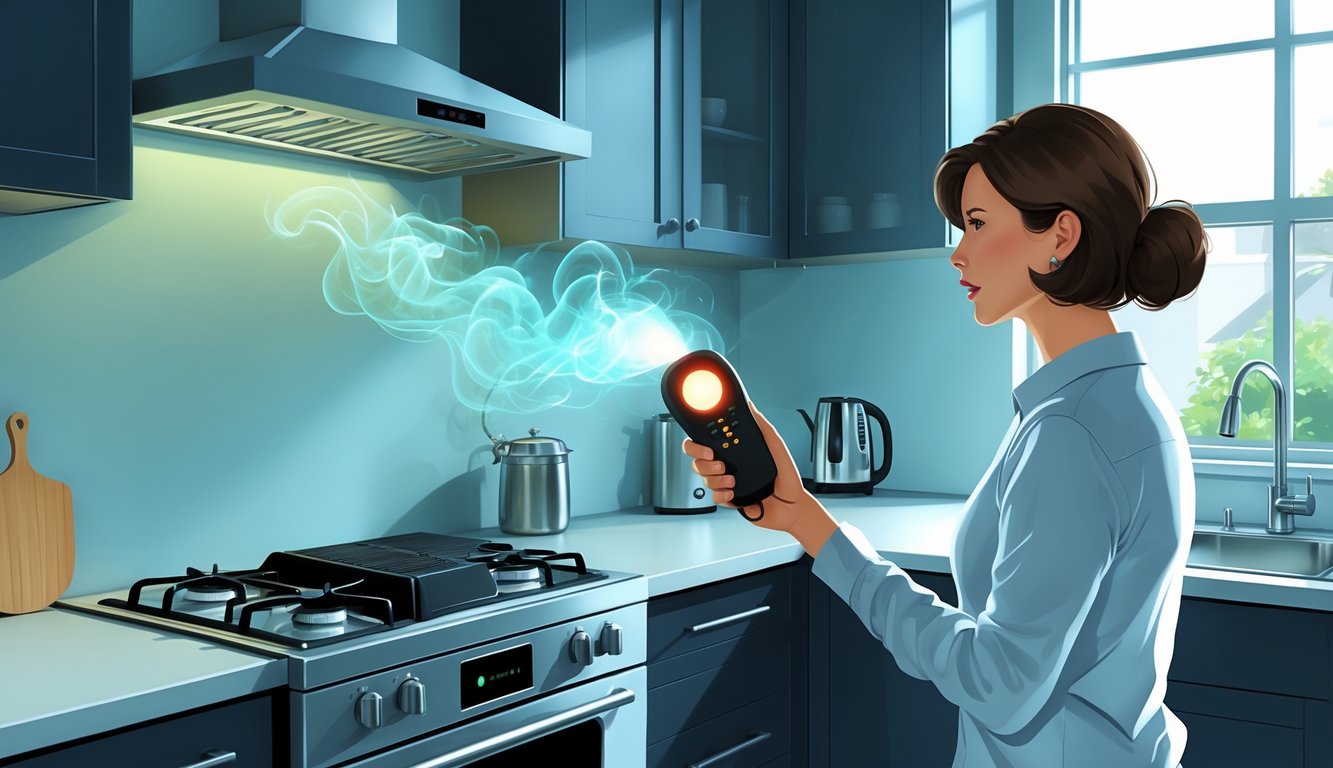
Key Differences Between Methane and Propane
Every winter, someone in my building confuses them. It matters. Methane (natural gas) rises and disperses; propane hugs the floor and seeps everywhere. That totally changes how you air out a room after a leak.
Methane ignites between 5% and 15% in air. Propane? 2.1% to 9.5%. So, a tiny mistake in a cabin? Disaster. Propane’s got 2.5 times the heat per cubic foot—great for grilling, terrifying for leaks. Safety folks say even a little propane under the floor needs a totally different response than methane.
I always tell people to check basements for propane, but nobody worries about methane collecting down there—it just wants to escape. Both stink (thanks, odorant), but honestly, your nose gives up after a minute. Once, I found both gases with a portable detector in a garage, four feet from the fridge. Not where you’d expect, right?
Major Causes of Gas Leaks in Homes
Ever unclogged your kitchen sink, then suddenly caught a whiff of rotten eggs? Never makes sense until you remember gas appliances don’t just start hissing for fun—maintenance and age are always lurking. Nobody talks about line inspections or what a bad install looks like until there’s a disaster.
Faulty Gas Appliances
My stove once clicked but didn’t light. Held the lighter a second too long—mini fireball. Lost some eyebrow. Stoves, furnaces, water heaters—they all leak when seals wear out, hoses crack, or valves fail. And regular checks? Supposed to be routine, but let’s be real, nobody reads those manuals you lose right after moving in.
The Plumbero’s rundown says missed cleaning and skipped maintenance are top causes. Gunk around burners or connectors blocks airflow and starts leaks you’ll never notice. Carbon monoxide detectors? Only useful after you skip basic upkeep. It’s like driving on bald tires—fine until suddenly it’s not.
Manufacturers say to replace hoses and use the right connectors, but have you ever seen anyone use a torque wrench on a stove? DIYers cut corners, and that’s where leaks start.
Aging or Damaged Gas Lines
So, here’s the thing: most houses built before the ‘70s still have these crusty old gas pipes—galvanized steel, weird brass unions, those sketchy flex connectors—lurking under the floors. Everybody just pretends it’s not a big deal, hoping the next owner will cough up for replacements. My neighbor once slapped electrical tape over a leak and called it genius. Spoiler: the whole block reeked for a week and his wife still brings it up at barbecues. Pipes corrode, joints wiggle loose, and you don’t notice until your bill’s absurd or you’re popping Advil for mystery headaches.
NFPA claims 30% of reported home gas leaks involve ancient or stressed lines. I’m not buying it. Every plumber I know swears it’s way higher, especially in neighborhoods where the sidewalks crack if you look at them funny. This guide on gas pipe leaks blames bad fittings and old pipes for most service calls, so maybe the stats are just… polite.
And trees? Oh, they’ll snap a buried line without warning. Minor earthquakes, too—pipes shift around and nobody notices until someone’s dog faints. If you’re not paying for real, licensed inspections—no, not your cousin who “knows a guy”—you’re just waiting for a repair bill that’ll make you wish you’d booked that checkup last year.
Improper Installation and Repairs
Watching a newbie try to thread gas fittings without the right sealant is like watching someone try to eat soup with a fork. Did you know natural gas and propane need different sealants? I didn’t, until I watched a “pro” use the wrong stuff, then jam a plug in by hand and call it done. Unbelievable.
It’s not just the obvious hacks, either. Well-intentioned DIYers skip pressure regulators, forget venting, or miss steps the code guys always flag. Gas Connection’s advice basically roasts bad installs: loose joints, botched meter swaps, all that jazz. You won’t notice until your dog refuses the house or the utility company sends you a nastygram.
City inspections? Don’t get me started. One visit after install, then nothing for decades. Swap appliances, remodel, whatever—half the time, old junk gets “grandfathered in.” That shiny new cooktop? Still running through a 1965 regulator if nobody checked. Leaks can simmer for years before anyone admits it.
Early Warning Signs You Shouldn’t Ignore
Every time I leave the house, I get this dumb little panic: am I missing the world’s most obvious gas leak? Not the subtle kind, either. I mean the “run now or regret it forever” kind. Insurance companies love to remind you, too—like you’d ever forget.
Distinctive Smell: Mercaptan Odor
Mercaptan. Sounds like a supplement, right? It’s just a chemical the gas company dumps in so you’ll notice leaks. Otherwise, gas is odorless—sneaky. I read somewhere (maybe NPR? I forget) that mercaptan’s “rotten egg” stench is impossible to miss. But honestly, I’ve had days where I barely notice I left the oven on, so who knows. There was this family in Palo Alto who missed it because their windows were open. So yeah, don’t get cocky. If you don’t smell it, maybe your nose is broken—or your seals are. Gas companies don’t care about your comfort; they just want you to notice before you blow up the block.
Unusual Hissing Sounds
Hissing—seriously? That’s the big warning? I mean, sure, you’re not supposed to hear any hissing unless you’re a snake, but with all the random house noises, who can tell? Weird hissing near appliances or pipes usually means leaking gas. Some plumbers say to feel for cold air, which sounds like terrible advice but apparently works. If you hear it, just leave. But wait—sometimes old radiators hiss, too, so now I’m paranoid every time the heat kicks on. I literally keep a paper list in my kitchen (yes, paper, like it’s 1993) just to remind myself what sounds are normal.